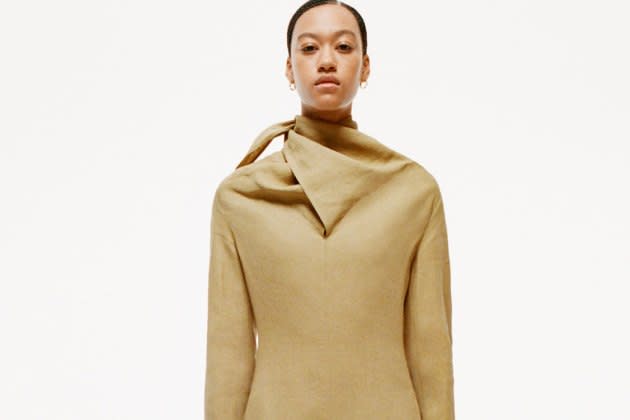Farfetch Grew Pre-owned Volume 27 Percent

Farfetch is seeing continual gains in conscious fashion.
The global e-tailer released the third edition of its conscious luxury trends report Wednesday, detailing how fashion — and beauty, too — are poised for growth. Farfetch defines conscious products as those that are independently vetted and either contain certified materials (organic, recycled, upcycled), are produced by certified production methods, are pre-owned, or come from a brand that scores well on ethical rating platform Good on You.
More from WWD
As it stands, Farfetch reported 1,400 sellers (across brands and boutiques) with more than 3,400 brands on the overall platform. Farfetch directly partners with 600 brands.
“The data amassed reveals the promising commercial opportunity for brands and retailers who embrace sustainability as a strategic imperative,” Thomas Berry, senior director of Sustainable Business at Farfetch, said in the report’s forward. “This report highlights the many ways in which brands and retailers are capitalizing on sustainability, positioning themselves at the forefront of change.”
For one, Farfetch grew its boutique pre-owned volume by 27 percent, year-over-year, per the report. Some of the top boutiques by volume included Amore, Vitkac and Eraldo, among others.
Brand conscious product sales leaders span Balenciaga, Stella McCartney, Ganni, Ami Alexandre Mattiussi, Veja, Prada, Off-White, Axel Arigato, Gucci, Vivienne Westwood, Nanushka, Toteme, Balmain Paris, Burberry and Marine Serre. (Though on the uptick, only 14 percent of these brands’ assortments were deemed conscious products in 2022, up from 12 percent in 2021).
Customers, rightly so, are fueling demand. Though a Farfetch customer survey from April 2023 found 39 percent of customers remain “skeptical” of sustainability claims, the report showed 27 percent of Farfetch customers purchasing at least one conscious product in 2022, up from 16 percent in 2021.
Farfetch said its pre-owned category is attracting and retaining high-value consumers, with “authenticity” as the top driving concern. Nearly half (or 46 percent) of Farfetch customers participated in resale in 2022, compared to 22 percent in 2021. Farfetch Second Life customers spend an average of 63 percent more on the Farfetch marketplace than customers who do not use the resale service.
Growth areas are vast and varied. Today, U.S. shoppers are leading in terms of the number of conscious products sold and pre-owned product sales on Farfetch. Farfetch data showed Brazil, Mexico and the United Arab Emirates to be “potentially attractive” markets based on growth potential.
Supply chain innovation was also highlighted in the report, including virtual try-on technology developed by Farfetch-owned Wanna, and brand sustainability ratings offered by Farfetch partner, Good on You. Resale solutions were also mentioned, which are offered by Farfetch-owned Luxclusif, whose technology powers Modes Resell.
“A lot of times, brands focus on sustainability initiatives in their direct operations, like ‘eco-friendly’ packaging and switching to renewable energy in their headquarters,” Good on You cofounder Sandra Capponi, said in the report. “While a good place to start, it’s not where the impact really happens. Managing their impacts across the supply chain is really where they should focus.”
Best of WWD
